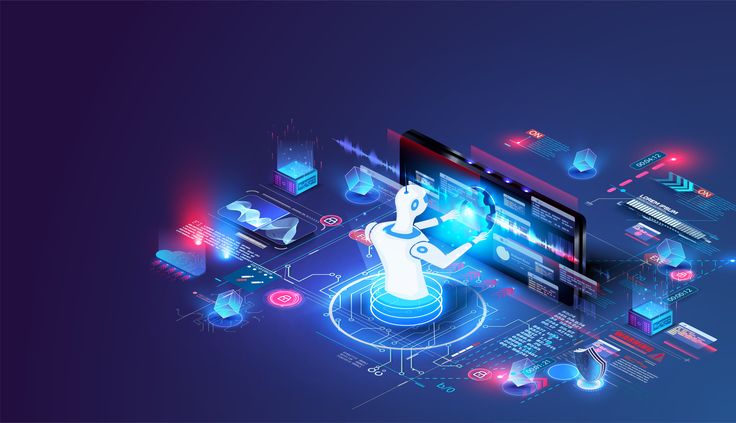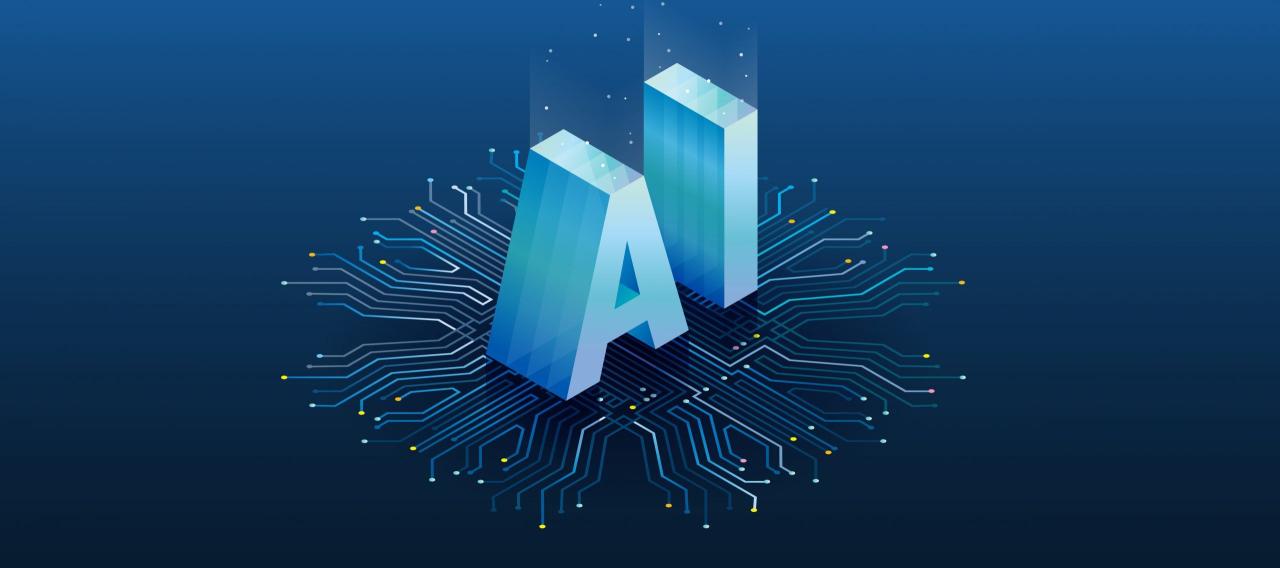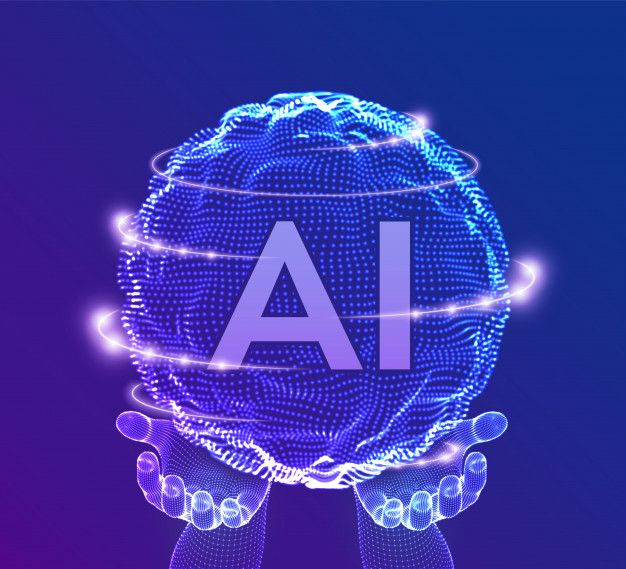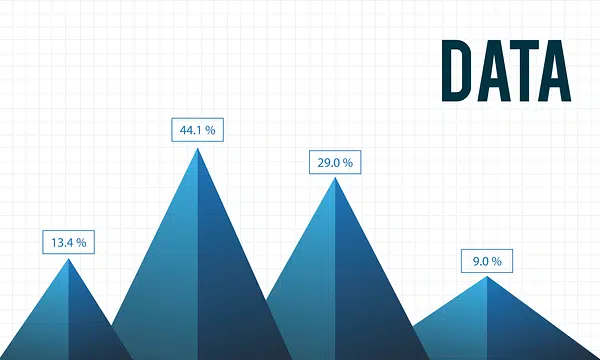The digital realm is witnessing an unprecedented acceleration in software development, a pace driven largely by the transformative power of artificial intelligence. At the heart of this revolution lies AI code generation, a groundbreaking capability that leverages intelligent algorithms to assist in, or even automate, the writing of software code. This isn’t science fiction; it’s a rapidly evolving reality fundamentally reshaping the programmer’s workflow. By offloading repetitive tasks, suggesting intelligent completions, and even drafting entire functional blocks of code, AI tools promise unprecedented levels of developer productivity, efficiency, and innovation, truly accelerating the entire development lifecycle from conception to deployment.
The Evolution of Coding: Why AI is the Next Step
To fully appreciate the impact and necessity of AI in code generation, it’s crucial to understand the historical trajectory of programming and the persistent challenges developers face today.
A. The Traditional Coding Paradigm
For decades, software development has been a predominantly manual, human-centric endeavor. While tools have evolved, the core act of writing code, line by line, has remained largely unchanged.
- Time-Consuming and Repetitive Tasks: A significant portion of a developer’s time is spent on boilerplate code, setting up basic structures, integrating APIs, or writing repetitive logic. These tasks, while essential, can be tedious and prone to human error.
- Debugging and Error Proneness: Writing complex software inevitably introduces bugs. Identifying, reproducing, and fixing these errors consumes a substantial amount of development time, often more than the initial coding itself. Manual coding increases the surface area for such errors.
- Knowledge Gaps and Learning Curves: Developers constantly face new languages, frameworks, libraries, and best practices. The sheer volume of information requires continuous learning, and junior developers often struggle with complex patterns or unfamiliar domains, leading to slower progress.
- Maintaining Large Codebases: As applications grow, their codebases become massive and intricate. Understanding existing code, ensuring consistency, and adding new features without introducing regressions is a daunting task that slows down development velocity.
- Focus on Mechanics, Not Innovation: When developers are bogged down by the mechanics of coding—syntax, boilerplate, standard integrations—less time and mental energy are left for higher-level problem-solving, innovative design, and strategic architectural decisions.
B. Early Automation and Assistant Tools
Before the advent of advanced AI, developers relied on various tools to streamline their work, laying the groundwork for what was to come.
- Integrated Development Environments (IDEs): IDEs offered syntax highlighting, auto-completion for known functions, and basic error checking, significantly improving coding speed and accuracy.
- Code Libraries and Frameworks: Reusable code libraries and comprehensive frameworks reduced the need to write everything from scratch, providing standardized components for common tasks.
- Static Code Analyzers: These tools helped identify potential bugs, code smells, and security vulnerabilities by analyzing code without executing it, catching issues early.
- Version Control Systems: Git and similar systems revolutionized collaboration and code management, enabling teams to work concurrently and track changes effectively.
While these tools provided significant productivity boosts, the core intellectual effort of translating requirements into executable code remained firmly with the human developer. AI code generation marks the next leap, moving from passive assistance to active co-creation.
Core Concepts and Modalities of AI Code Generation
AI code generation isn’t a monolithic concept; it encompasses various approaches and functionalities, each offering distinct benefits to the development workflow.
A. Code Completion and Suggestion
At its most fundamental level, AI code generation enhances traditional auto-completion. Advanced AI models, trained on vast repositories of code, can provide highly intelligent and context-aware suggestions.
- Contextual Awareness: Unlike simple keyword-based auto-completion, AI-powered tools understand the surrounding code, variable names, function signatures, and even the intent of the developer based on comments or previous lines.
- Multi-Line Suggestions: These tools can suggest not just single words or function names, but entire lines or even small blocks of code that fit the current context, significantly reducing typing and cognitive load.
- Boilerplate Generation: They can automatically generate common boilerplate code for loops, conditional statements, class definitions, or common API calls, tailored to the specific language and framework in use.
Examples include features found in GitHub Copilot, Tabnine, and built-in AI capabilities within modern IDEs.
B. Code Snippet and Function Generation
Moving beyond suggestions, AI can generate larger, self-contained code snippets or entire function bodies based on a high-level prompt or problem description.
- Natural Language to Code: Developers can describe what they want to achieve in plain English (or other natural languages), and the AI will attempt to generate the corresponding code. For instance, “write a Python function to sort a list of numbers” or “create a JavaScript function to fetch data from this API endpoint.”
- API Integration Code: AI can generate the necessary code to interact with specific APIs, handling authentication, request/response serialization, and error handling, based on API documentation or examples.
- Test Case Generation: A promising application is the ability to generate unit test cases for existing code, accelerating the testing phase and improving code quality.
- Data Transformation Logic: AI can help generate code for common data manipulation tasks, such as parsing CSVs, transforming JSON structures, or cleaning datasets.
C. Full Application Scaffolding and Architecture Drafting
The most ambitious forms of AI code generation aim to scaffold entire applications or propose architectural patterns based on broader requirements.
- Project Scaffolding: Generate the basic directory structure, configuration files, and initial boilerplate for a new project in a specific framework (e.g., a React app, a Spring Boot microservice).
- Component Generation: Create full UI components (e.g., a login form, a data table) complete with HTML, CSS, and JavaScript, based on a brief description or design mockups.
- Architectural Patterns: Suggest common architectural patterns (e.g., MVC, microservices, event-driven) and generate initial code structures that adhere to these patterns, including communication mechanisms and database integrations.
- Schema and Database Code: Generate database schemas (DDL), ORM models, and basic CRUD (Create, Read, Update, Delete) operations based on entity descriptions.
D. Code Refactoring and Optimization
Beyond new code, AI can assist in improving existing codebases.
- Refactoring Suggestions: Identify code smells, overly complex functions, or redundant logic and suggest clearer, more efficient refactoring options.
- Performance Optimization: Analyze code for performance bottlenecks and suggest optimizations, potentially even rewriting portions for better efficiency.
- Code Translation/Migration: Assist in translating code from one language to another or migrating codebases between different framework versions, a historically challenging task.
Transformative Advantages of AI Code Generation
The widespread adoption of AI code generation tools promises to revolutionize the software development landscape, bringing about significant benefits for individual developers, teams, and entire organizations.
A. Dramatically Accelerated Development Speed
One of the most immediate and impactful benefits of AI code generation is the dramatic acceleration of development speed. By automating repetitive tasks, providing intelligent suggestions, and generating boilerplate code, developers can focus on higher-level problem-solving rather than mundane typing.
- Reduced Boilerplate: AI handles the tedious setup of functions, classes, and common patterns, freeing developers to concentrate on core business logic.
- Faster Prototyping: Rapidly generate initial versions of components or entire application skeletons, allowing for quicker iteration and validation of ideas.
- Streamlined Integrations: Expedite the integration of third-party APIs by generating the necessary client code and data structures based on documentation.
- Focus on Core Logic: Developers spend more time on complex algorithms, unique business rules, and innovative features, leading to higher-value output.
B. Enhanced Developer Productivity and Efficiency
AI acts as a powerful co-pilot, augmenting developer capabilities rather than replacing them entirely, leading to significant productivity gains.
- Less Context Switching: AI can quickly provide relevant code snippets, reducing the need for developers to constantly search documentation or external resources, keeping them in flow.
- Reduced Cognitive Load: Automating repetitive tasks frees up mental energy, allowing developers to concentrate on more challenging aspects of the problem.
- Onboarding Acceleration: New team members can become productive faster as AI tools assist them in navigating unfamiliar codebases or frameworks by generating relevant examples.
- Error Reduction: By generating common patterns and syntax correctly, AI can reduce the number of simple syntax errors or logical mistakes, leading to fewer bugs and less debugging time.
C. Improved Code Quality and Consistency
AI models, trained on massive datasets of high-quality code, can promote better coding practices and consistency across projects.
- Adherence to Best Practices: AI-generated code can often adhere to common design patterns, naming conventions, and best practices, as these are learned from the training data.
- Fewer Common Bugs: Automated generation of boilerplate and common algorithms reduces the likelihood of introducing common human-made errors.
- Standardization: For large teams, AI can help enforce a consistent coding style and structure, making codebases easier to read, maintain, and contribute to.
- Automated Refactoring Suggestions: AI can identify areas for improvement in existing code, suggesting more efficient or readable alternatives, leading to continuous code quality enhancement.
D. Democratization of Development Skills
AI code generation has the potential to lower the barrier to entry for programming, empowering a wider range of individuals to create software.
- Assisting Novice Developers: Beginners can leverage AI to understand coding patterns, generate examples, and get unstuck on syntax, accelerating their learning process.
- Empowering Non-Developers: Business analysts, domain experts, or even advanced end-users could potentially generate simple scripts or automate tasks using natural language prompts, fostering ‘citizen development.’
- Bridging Skill Gaps: Teams facing shortages in specific language or framework expertise might use AI to kickstart projects or maintain legacy code, bridging immediate skill gaps.
E. Focus on Innovation and Complex Problem-Solving
By automating the mundane, AI frees developers to channel their creativity and intellectual power towards more challenging and innovative aspects of software engineering.
- Higher-Level Design: Developers can spend more time on architectural decisions, system design, and understanding complex business requirements.
- Experimentation: The ability to rapidly generate and test different approaches encourages more experimentation and innovation in solving unique problems.
- Creative Problem Solving: When basic coding tasks are handled by AI, human developers can dedicate their cognitive resources to truly creative problem-solving, algorithm design, and user experience enhancement.
Challenges and Considerations in Adopting AI Code Generation
Despite its immense promise, the widespread adoption of AI code generation faces several significant challenges and raises important considerations that organizations and developers must carefully navigate.
A. Accuracy, Reliability, and ‘Hallucinations’
AI models, especially large language models, can sometimes generate code that is syntactically correct but logically flawed, insecure, or simply doesn’t meet the intended requirements. This is often referred to as ‘hallucination’.
- Logical Errors: The code might compile and run but produce incorrect results or behave unexpectedly in edge cases.
- Security Vulnerabilities: AI might inadvertently introduce security flaws (e.g., SQL injection vulnerabilities, insecure API calls) if not explicitly trained on secure coding practices or if the prompt is ambiguous.
- Context Misinterpretation: AI might misinterpret complex natural language prompts, leading to code that solves a different problem than intended.
- Need for Human Oversight: Generated code always requires thorough human review, understanding, and testing. Blindly trusting AI output can lead to significant issues in production.
B. Ethical Concerns, Bias, and Intellectual Property
AI models are trained on vast datasets of existing code, which introduces ethical and legal complexities.
- Bias in Training Data: If the training data contains biased or suboptimal coding practices, the AI might perpetuate these issues in its generated code.
- Intellectual Property (IP) and Licensing: A significant concern is whether AI-generated code, especially when trained on open-source repositories, inadvertently incorporates licensed code or violates existing intellectual property rights. Determining ownership and liability for such code is a complex legal challenge.
- Attribution and Plagiarism: When AI generates code that closely resembles existing open-source projects, questions arise about proper attribution and potential plagiarism.
C. Developer Skill Dilution and Dependency
Over-reliance on AI tools might lead to a dilution of fundamental coding skills over time.
- Reduced Problem-Solving Muscle: If developers consistently rely on AI to generate solutions, they might lose the practice of deeply understanding algorithms, data structures, and architectural patterns.
- Dependence on Tools: Teams could become overly dependent on specific AI tools, making it harder to function if the tools are unavailable, change dramatically, or become prohibitively expensive.
- Maintaining AI-Generated Code: Developers still need to understand, debug, and maintain AI-generated code, which can be challenging if the code’s logic is opaque or if it deviates significantly from team coding standards.
D. Integration Complexity and Workflow Adaptation
Integrating AI code generation tools into existing development workflows and IDEs can present challenges.
- Tool Compatibility: Ensuring seamless integration with preferred IDEs, version control systems, CI/CD pipelines, and other development tools can be complex.
- Workflow Adaptation: Teams need to adapt their coding, review, and testing workflows to effectively incorporate AI-generated code, including establishing guidelines for its use and verification.
- Security of the Toolchain: Ensuring the AI code generation tool itself is secure and that the code it processes or generates doesn’t expose sensitive information.
E. Performance and Resource Demands
Running and training sophisticated AI code generation models can be computationally intensive, requiring significant resources.
- Inference Costs: Continuous use of AI code generation tools can incur cloud compute costs, especially for large models.
- Local Resource Requirements: Some advanced features might require powerful local machines or specific hardware to run efficiently.
- Latency: Depending on the model and network, there might be slight latency in receiving AI suggestions or generated code, impacting immediate developer flow.
F. Overcoming Trust and Adoption Barriers
Developers, by nature, are often cautious about new tools, especially those that claim to automate core aspects of their craft. Building trust in AI-generated code and overcoming initial skepticism requires:
- Demonstrable Value: Clearly showcasing the productivity gains and quality improvements.
- Transparency: Understanding how the AI generates code (to the extent possible) helps build trust.
- Incremental Adoption: Starting with less critical tasks and gradually expanding AI’s role as confidence grows.
Best Practices for Leveraging AI Code Generation Effectively
To maximize the benefits of AI code generation and mitigate its inherent challenges, organizations and developers should adopt a set of strategic best practices. This involves treating AI as an intelligent assistant, not a replacement.
A. Maintain Human Oversight and Critical Review
The most crucial best practice is to always maintain human oversight and critical review of all AI-generated code. AI is a powerful assistant, but it’s not infallible.
- Thorough Code Review: Treat AI-generated code just like code written by a junior developer – it needs rigorous review by experienced team members for correctness, security, performance, and adherence to coding standards.
- Deep Understanding: Developers must understand the logic and implications of the generated code. Blindly copying and pasting without comprehension is a recipe for disaster.
- Responsible Prompts: Craft clear, precise, and explicit prompts for the AI to guide its output effectively. The quality of the output often directly correlates with the quality of the input prompt.
B. Integrate with Robust Automated Testing
Never deploy AI-generated code without comprehensive automated testing. AI can make logical errors or introduce subtle bugs that manual review might miss.
- Unit Tests: Ensure the AI-generated functions have corresponding unit tests that validate their logic.
- Integration Tests: Verify that the generated code integrates correctly with other parts of the system.
- Performance and Security Tests: Run automated security scans and performance tests on code to catch vulnerabilities or bottlenecks introduced by AI.
- Test Case Generation by AI: Ironically, use AI to help generate initial test cases, but then thoroughly review those tests too.
Automated testing acts as a critical safety net, validating the AI’s output before it reaches production.
C. Focus AI on Boilerplate and Repetitive Tasks
Strategically apply AI code generation to the tasks where it provides the most value and carries the least risk: boilerplate, repetitive code, and well-understood patterns.
- Scaffolding: Use AI for initial project setup, component generation, and common file structures.
- CRUD Operations: Automate the generation of standard database create, read, update, delete operations.
- API Client Stubs: Generate code to interact with external APIs based on their OpenAPI/Swagger specifications.
- Refactoring Suggestions: Leverage AI to identify and suggest improvements for code quality or performance.
This frees human developers for complex problem-solving and innovative design.
D. Cultivate a Secure-by-Design Mindset
Given the potential for AI to introduce security vulnerabilities, adopt a secure-by-design mindset.
- Security Training: Ensure developers are well-versed in secure coding practices, enabling them to identify and remediate security flaws in AI-generated code.
- Automated Security Scans: Integrate static application security testing (SAST) and dynamic application security testing (DAST) tools into your CI/CD pipelines to automatically scan both human-written and AI-generated code.
- Input Validation: Always assume AI-generated code, like any external input, might contain vulnerabilities. Implement robust input validation and sanitization for any user-controlled data.
- Principle of Least Privilege: If AI models have access to your code, ensure they operate with the least privilege necessary.
E. Manage Intellectual Property and Licensing Risks
Organizations must proactively address the intellectual property and licensing implications of using AI code generation tools.
- Understand Tool Licenses: Carefully review the terms of service and licensing agreements of AI code generation tools, especially concerning the ownership and usage rights of generated code.
- Internal Guidelines: Establish clear internal policies and guidelines for developers on the responsible use of AI code generation, including requirements for attribution or avoiding problematic patterns.
- Code Scanners: Consider using tools that can scan generated code for similarities to open-source licenses or known proprietary code.
F. Invest in Developer Upskilling and Training
Instead of viewing AI as a threat, see it as an opportunity for developers to upskill.
- Focus on Higher-Level Skills: Train developers in architectural design, complex problem-solving, system integration, security, and performance optimization—skills that AI complements, but does not replace.
- AI Tool Proficiency: Provide training on how to effectively use AI code generation tools, write effective prompts, and critically evaluate their output.
- Continuous Learning: Foster a culture of continuous learning about AI advancements and their application in software development.
G. Monitor and Adapt Tooling Choices
The AI code generation landscape is evolving rapidly. Continuously monitor new tools and adapt your tooling choices as the technology matures and new capabilities emerge. What’s cutting-edge today might be standard practice tomorrow. Be flexible and willing to experiment.
The Future Trajectory of AI Code Generation
AI code generation is still in its nascent stages, but its trajectory suggests a profound impact on the future of software development. Several key trends are poised to shape its evolution.
A. Hyper-Personalization and Contextual Understanding
Future AI code generation tools will exhibit an even deeper level of hyper-personalization and contextual understanding. They won’t just suggest code based on syntax but will understand the entire project’s architecture, design patterns, team coding standards, existing codebase, and even the developer’s personal coding style. This will lead to more relevant, accurate, and seamlessly integrated code suggestions.
B. Multimodal Input and Output
The interaction with AI code generation will become increasingly multimodal. Developers will be able to:
- Voice Prompts: Use natural language voice commands to describe coding tasks.
- Design-to-Code: Generate functional code directly from visual design mockups, wireframes, or even hand-drawn sketches.
- Diagram-to-Code: Translate architectural diagrams (e.g., UML, sequence diagrams) into executable code.
- Behavior-Driven Development (BDD): Convert high-level user stories or acceptance criteria directly into test cases and underlying code implementations.
C. Autonomous Agents for Software Development
The concept of autonomous AI agents capable of carrying out complex software development tasks with minimal human intervention is gaining traction. These agents might:
- Self-Correcting Code: Automatically identify and fix bugs in generated code.
- End-to-End Feature Development: Given a high-level feature request, an AI agent could generate code, write tests, integrate with existing systems, and potentially even deploy the feature.
- Automated Refactoring Campaigns: Proactively refactor large sections of a codebase to improve performance, readability, or adherence to new standards.
D. AI in Code Review and Security Audits
AI will become an increasingly powerful tool for code review and security auditing. Beyond static analysis, AI will be able to:
- Intelligent Code Reviewers: Act as an additional reviewer on pull requests, identifying logical flaws, security vulnerabilities, and stylistic inconsistencies that human reviewers might miss.
- Threat Modeling Assistance: Help identify potential attack vectors and suggest mitigation strategies based on code patterns and known vulnerabilities.
- Compliance Checking: Automatically ensure generated and human-written code adheres to specific industry regulations or internal compliance standards.
E. Evolution of Programming Languages and Paradigms
The rise of AI code generation may even influence the design of future programming languages and paradigms. Languages might become more high-level and declarative, designed for easier interpretation by AI and optimized for AI-driven code synthesis. New tooling ecosystems will emerge around these AI-centric development models.
F. Democratization to Citizen Developers
AI code generation will further democratize software development, making it accessible to a much broader audience of citizen developers—individuals with domain expertise but limited traditional coding skills. This could lead to an explosion of custom applications and automation built by business users, empowering them to solve their own problems without relying on dedicated development teams.
Conclusion
AI code generation is not a fleeting trend but a fundamental shift that is rapidly redefining the essence of software development. By acting as an intelligent co-pilot, these tools offer immense potential to dramatically accelerate development speed, boost developer productivity, improve code quality, and even democratize access to coding skills. This represents a pivotal moment, transitioning from manual craftsmanship to an era of intelligent, augmented creation.
While significant challenges exist—ranging from ensuring code accuracy and addressing ethical considerations to managing intellectual property and adapting workflows—these are surmountable hurdles for organizations that embrace thoughtful implementation. The key lies in viewing AI as an augmentation, a powerful assistant that frees human developers to focus on higher-level problem-solving, innovative design, and strategic architectural decisions. As AI continues to evolve, becoming more contextually aware and capable of autonomous action, it will undoubtedly remain at the forefront of accelerating software development, driving unprecedented levels of efficiency and innovation across the digital landscape. The future of coding is collaborative, and AI is an indispensable partner in building it.














